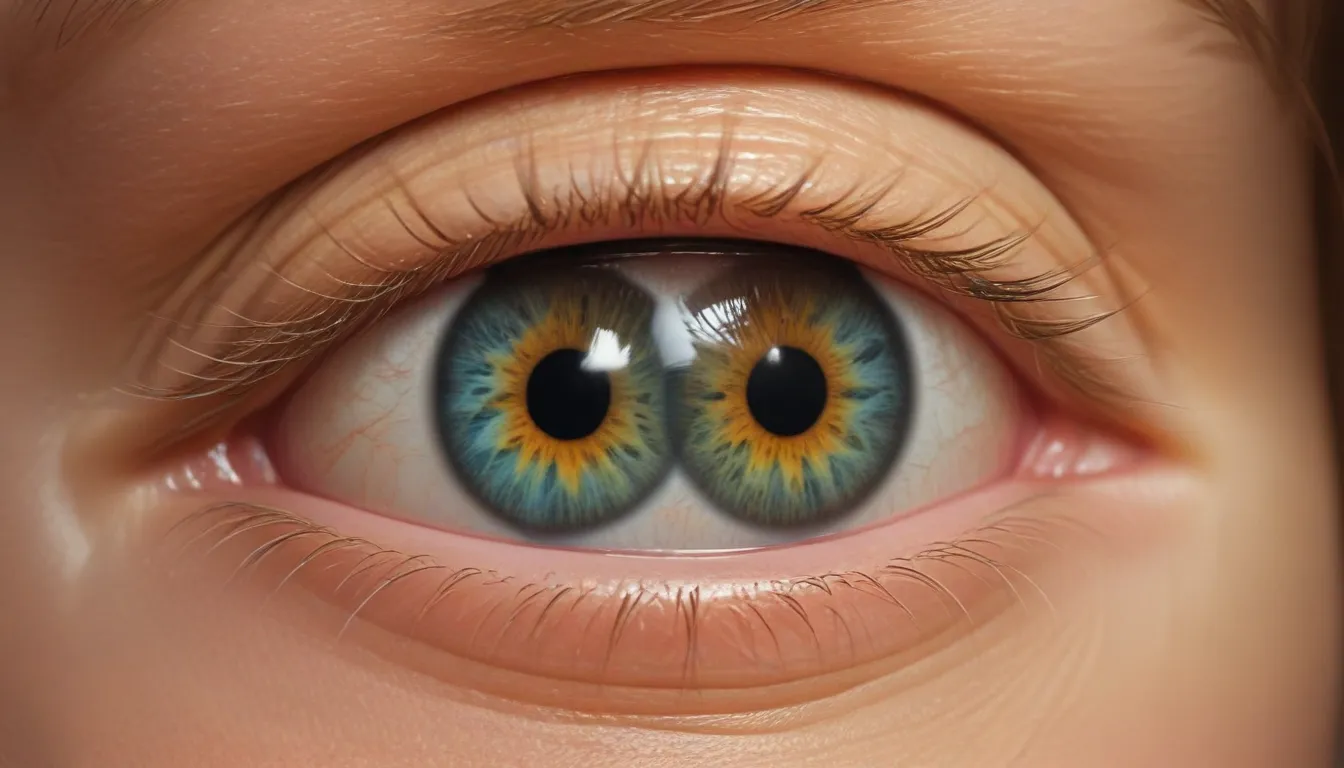
Lazy eye, also known as amblyopia, is a common vision problem where one eye fails to develop normal vision. Although it’s primarily considered a physical condition, some spiritual practitioners believe there might be deeper meanings behind this visual impairment. In this guide, we will explore the various perspectives on the spiritual significance of lazy eye and how they can help us gain insights into our lives.
What is Lazy Eye?
Before diving into its spiritual meaning, let’s first understand what a lazy eye is. As mentioned earlier, lazy eye is a vision problem that affects one or both eyes. It occurs when the brain favors one eye over the other and suppresses images from the weaker eye. This can lead to poor vision in the affected eye if left untreated.
The most common cause of lazy eye is an imbalance between the eyes, such as a significant difference in prescription between them or a misaligned eye (strabismus). Other factors contributing to this condition include:
- Genetics: Family history increases the risk of developing lazy eye.
- Premature birth: Babies born prematurely are more likely to develop vision problems later on.
- Refractive errors: Uncorrected nearsightedness (myopia), farsightedness (hyperopia), or astigmatism can contribute to lazy eye development.
- Deprivation in early childhood: Conditions like cataracts, ptosis (droopy eyelid), or injuries that block light from reaching the retina can lead to amblyopia if not treated promptly.
While these are the primary causes of lazy eye, there isn’t a universally accepted explanation for its spiritual significance. However, various spiritual traditions have their interpretations and suggestions on how to approach this condition spiritually.
Eastern Perspectives
In Eastern spiritual practices like Chinese medicine and Ayurveda, imbalances in the body can manifest as physical symptoms. From this perspective, a lazy eye might be indicative of an internal disharmony that needs addressing. Here are some ways to approach the issue from an Eastern standpoint:
Acupuncture
Acupuncture is a traditional Chinese medicine technique that involves inserting thin needles into specific points on the body to balance energy flow (Qi). Practitioners might suggest acupuncture as a way to treat lazy eye by addressing any underlying imbalances in the body’s energy system.
Herbal Medicine
Chinese herbal medicine often involves the use of plants and other natural substances to promote healing. Some herbs may help support optimal vision health, which could potentially benefit individuals with a lazy eye. Consulting with a trained practitioner can provide guidance on appropriate herbal remedies.
Yoga and Meditation
Incorporating yoga and meditation into your daily routine can help cultivate inner balance and focus. By practicing these mind-body techniques, you might be better equipped to deal with the challenges associated with living with a lazy eye.
Western Perspectives
Western spiritual traditions, such as Christianity, often emphasize the importance of faith and trust in a higher power. From this perspective, one might interpret a lazy eye as a call to develop greater faith or trust in oneself and the universe. Here are some ways to approach the issue from a Western standpoint:
Prayer and Meditation
Prayer and meditation can help cultivate a sense of inner peace and connection with something greater than oneself. By regularly engaging in these practices, you might find that your perspective on your lazy eye shifts, allowing for greater understanding and acceptance.
Affirmations and Visualization
Positive affirmations and visualizations are powerful tools for manifesting change in our lives. You could try creating affirmations related to your lazy eye, such as “My vision is improving every day,” or engaging in visualization exercises where you imagine yourself with perfect vision.
Seeking Guidance from Spiritual Mentors
If you’re struggling to make sense of the spiritual meaning behind your lazy eye, consider seeking guidance from a spiritual mentor or counselor who can provide insight and support during this time.
Alternative Perspectives
Some individuals may choose to explore alternative explanations for their lazy eye, such as past life regression therapy or shamanic healing. While these approaches are not based on scientific evidence, they may resonate with some people seeking answers beyond conventional medicine.
Past Life Regression Therapy
Past life regression therapy is a form of hypnosis that aims to uncover memories from previous lifetimes. Some practitioners believe that issues like lazy eye can stem from unresolved trauma or karma carried over from past lives. If you’re interested in exploring this option, find a certified therapist who specializes in past life regression therapy.
Shamanic Healing
Shamanism is an ancient practice that involves communicating with spirit guides and other entities to address physical, emotional, and spiritual imbalances. In some shamanic traditions, lazy eye might be seen as a message from the spirit world requiring attention or healing work. If you’re open to exploring this approach, consider working with a trained shaman or practicing shamanic techniques on your own.
Conclusion
Lazy eye is a complex condition that may have various underlying causes. While there isn’t a universally accepted spiritual meaning behind it, exploring different perspectives can help us gain insights into our lives and approach this challenge with more understanding and compassion. Whether you choose to pursue Eastern practices like acupuncture or Western approaches such as prayer and meditation, remember that the path to healing is unique for each individual.
Remember always to consult with healthcare professionals regarding any medical concerns. Spiritual practices should complement, not replace, standard medical care. Embrace your journey towards better vision and deeper self-awareness, knowing that you are supported by a vast network of energy and guidance.





